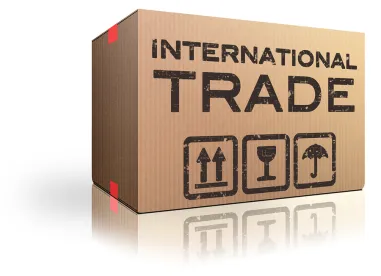In our March 9 client alert we outlined the proclamations issued by President Trump announcing tariffs on imports of steel and aluminum in the United States, which will go into effect on March 23.
The European Union—which is the second-largest foreign supplier of steel and aluminum to the United States, after Canada—has expressed concern about the imposition of these tariffs and may take a variety of actions in response, including challenging these tariffs in the World Trade Organization and/or imposing retaliatory tariffs of its own.
EU Exemption from Tariffs Seems Unlikely
President Trump’s proclamations indicated that additional country-specific exemptions or modifications may be granted in the future to other allies.
The EU Trade Commissioner and other EU leaders on March 9 insisted that EU Member States will continue to address this through the EU framework, in theory excluding bilateral agreements between the U.S. and specific Member States.
President Trump has since raised the possibility of tariffs on U.S. imports of EU-made cars, and has raised concerns about existing EU tariffs, and environmental and sanitary import restrictions for agricultural goods. The latter is taken in Brussels to refer to EU measures on imports of hormone-treated beef and mandatory labeling of genetically-modified foods. These issues have been addressed in the WTO, and are sensitive topics for the EU. If the U.S. makes EU action on these a condition for the exemption from tariffs on steel and aluminum imports, the EU is unlikely to meet President Trump’s expectations.
The EU is therefore likely to pursue its plans to retaliate against the American tariffs, which may take effect around June 23, placing 25 percent tariffs on approximately $3.5 billion worth of U.S. exports to the block.
Likely Targets of EU Retaliation
A list of American products which could be subjected to EU tariffs was elaborated by the European Commission and discussed by trade ministers in a meeting on February 27, and was leaked on the eve of a Commission meeting on March 7. This list is not final, and will be discussed further within the EU this week.
The European Commission has singled out a number of iconic U.S. products for potential trade retaliation and may include:
Public Policy and Government Affairs
- agricultural products, such as peanut butter, kidney beans, rice, cranberries, and orange juice;
- cosmetic products, such as lip and eye “make-up preparations”; ¾ apparel, such as cotton t-shirts, denim jeans, and leather shoes; and ¾ a wide range of steel products.
Mechanisms to Pursue Retaliation
The Commission envisages reacting to the U.S. tariffs on three different parallel tracks:
1.The WTO dispute settlement procedure: the EU (probably together with other WTO members) will first challenge the U.S. claim that the tariffs are justifiable under the “national security” exception. This would be dealt with by a WTO Panel and possibly go to the WTO Appellate Body. Only then, if the U.S. claim is rejected and the Trump administration refuses to amend the tariffs, would complaining parties (including the EU) be allowed to request compensation. The WTO would then authorize retaliation “equivalent to the level of nullification and impairment.” This process can obviously take years before retaliatory measures can be applied.
2.Calibrated safeguard measures to protect the European Union steel industry: these measures would be triggered under a WTO procedure if the U.S. tariffs cause a surge of steel imports from third countries to the EU, threatening its domestic producers.
3.Safeguard measures aimed at “re-balancing” the trade between the EU and the U.S., affected by the U.S. tariffs: this procedure would allow “retaliatory” measures to be triggered “immediately” (after a minimum of three months for consultation in the WTO). According to the Commission, these safeguards are WTO-compatible if applied proportionally and if they respect specific criteria.
As to the procedure, for trade issues, the EU Commission not only has the right of initiative, but also conducts the negotiations with third parties, including inside the WTO. Regulations relating to trade defense measures are adopted by the Council of Ministers, but their implementation usually is made through “Implementing Acts,” decided on by the Commission and assisted by a “committee” of Member States’ experts (the “comitology” procedure). In this case:
- as for the WTO dispute mechanism, the Commission can start the procedure alone, but needs to consult regularly with the Trade Policy Committee of the Council;
- the safeguard measures have already been discussed in the (Council) Working Party on Trade Questions; in practice, the Safeguards Committee, made up of Member States’ experts and run by the Commission, would adopt these by Qualified Majority; ¾ any retaliation measures would be dealt with according to the Trade Enforcement Regulation (No. 654/2014); Member States’ experts would be consulted through the Trade Barriers Committee. (Note that there is no precedent for the use of this procedure to date.)
The potential spill-over of U.S. and EU action on tariffs may extend well beyond the steel and aluminum industries. Businesses involved in transatlantic trade will need to gauge their exposure carefully and consider how to respond to potential tariffs.








 />i
/>i
